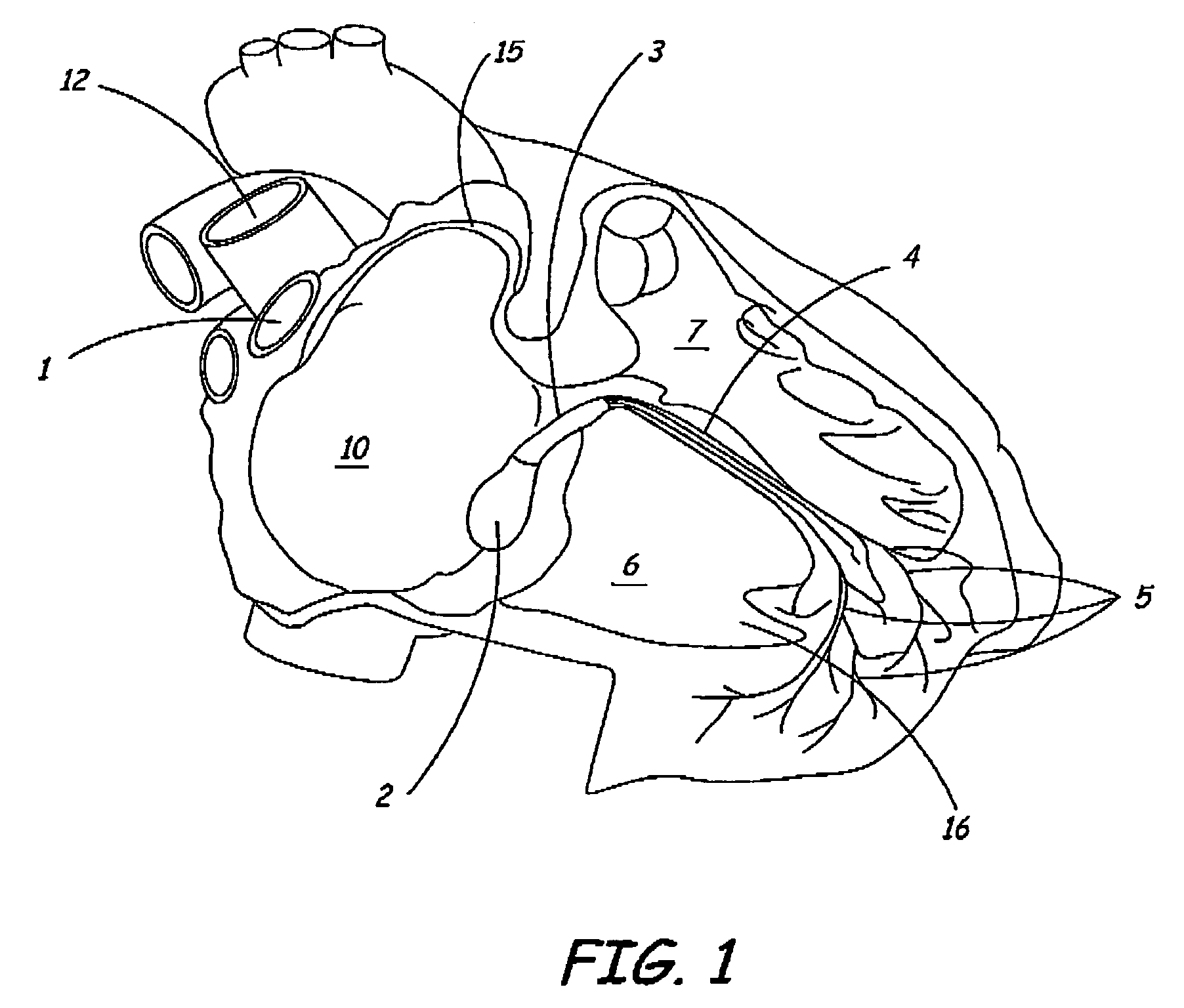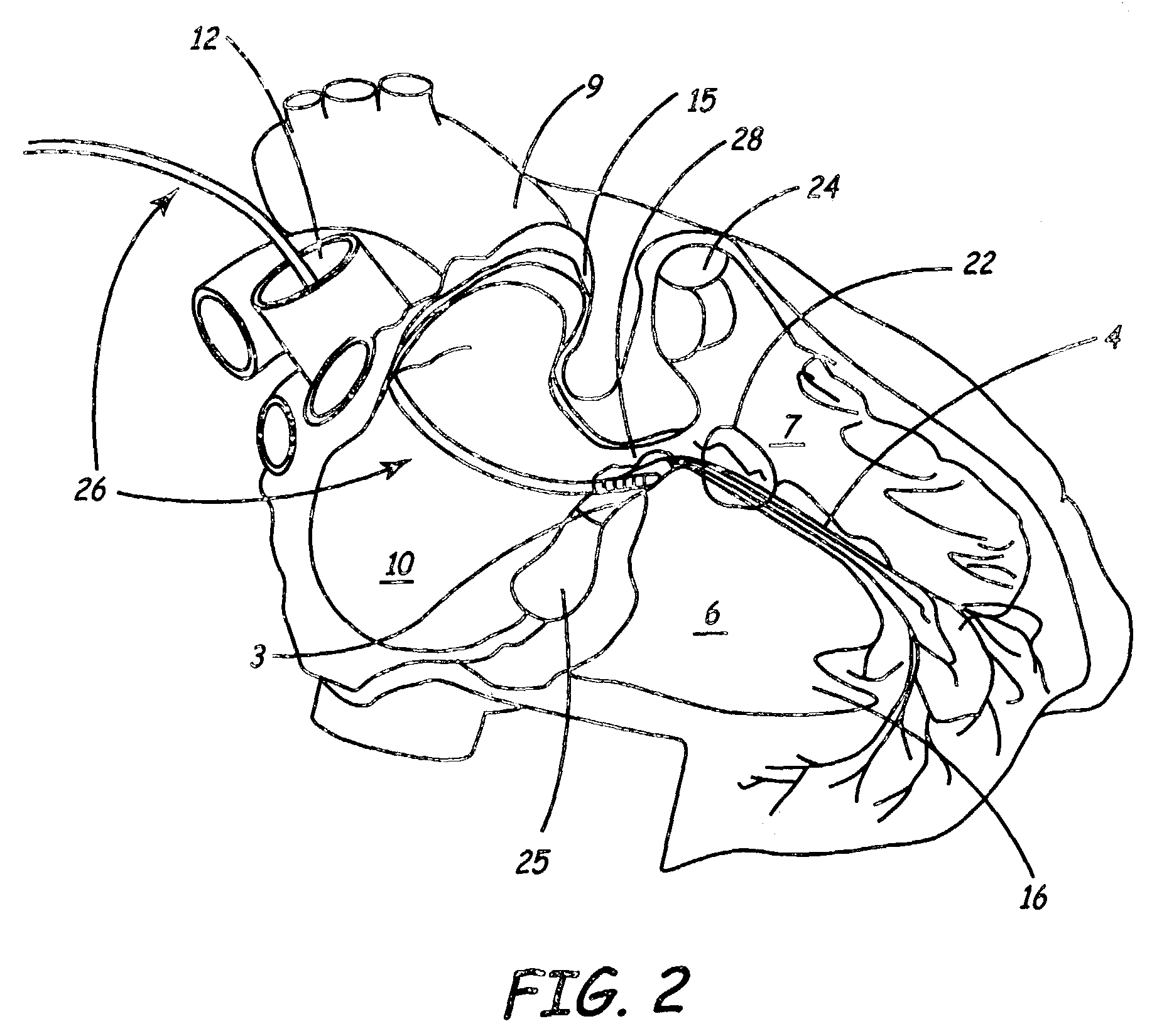Multipolar pacing method and apparatus
a multi-polar, pacing technology, applied in the direction of internal electrodes, transvascular endocardial electrodes, therapy, etc., can solve the problems of unnatural ventricular contraction pattern, ineffective pacing from the atrial appendage, and stimulation from this site that is counter to the heart's natural operation
- Summary
- Abstract
- Description
- Claims
- Application Information
AI Technical Summary
Benefits of technology
Problems solved by technology
Method used
Image
Examples
Embodiment Construction
[0027]FIG. 1 is a schematic diagram of a right side of a heart having an anterior-lateral wall peeled back to present a portion of a heart's intrinsic conduction system and chambers of a right atrium 10 and a right ventricle 6. Pertinent elements of the heart's intrinsic conduction system, illustrated in FIG. 1, include a sinoatrial (SA) node 1, an atrioventricular node 2, a bundle of His 3, a right bundle branch 4, and Purkinje fibers 5. SA node 1 is shown at a junction between a superior vena cava 12 and right atrium (RA) 10. An electrical impulse starting at SA node 1 travels rapidly through RA 10 and a left atrium (not shown) to AV node 2. At AV node 2, the impulse slows to create a delay before passing on through a bundle of His 3, which branches, in an interventricular septum 7, into a right bundle branch 4 and a left bundle branch (not shown) and then, apically, into Purkinje fibers 5. Following the delay, the impulse travels rapidly throughout right ventricle (RV) 6 and a le...
PUM
 Login to View More
Login to View More Abstract
Description
Claims
Application Information
 Login to View More
Login to View More - R&D
- Intellectual Property
- Life Sciences
- Materials
- Tech Scout
- Unparalleled Data Quality
- Higher Quality Content
- 60% Fewer Hallucinations
Browse by: Latest US Patents, China's latest patents, Technical Efficacy Thesaurus, Application Domain, Technology Topic, Popular Technical Reports.
© 2025 PatSnap. All rights reserved.Legal|Privacy policy|Modern Slavery Act Transparency Statement|Sitemap|About US| Contact US: help@patsnap.com



